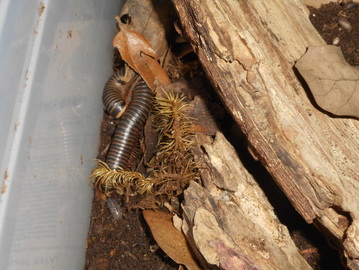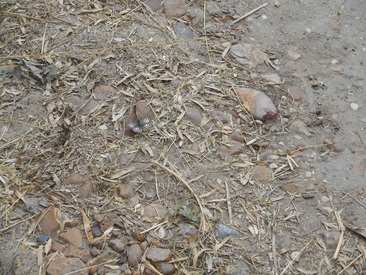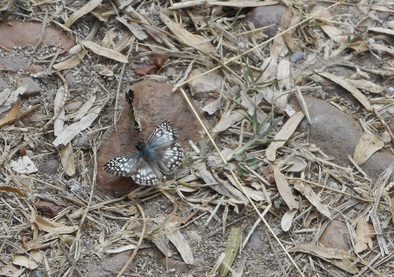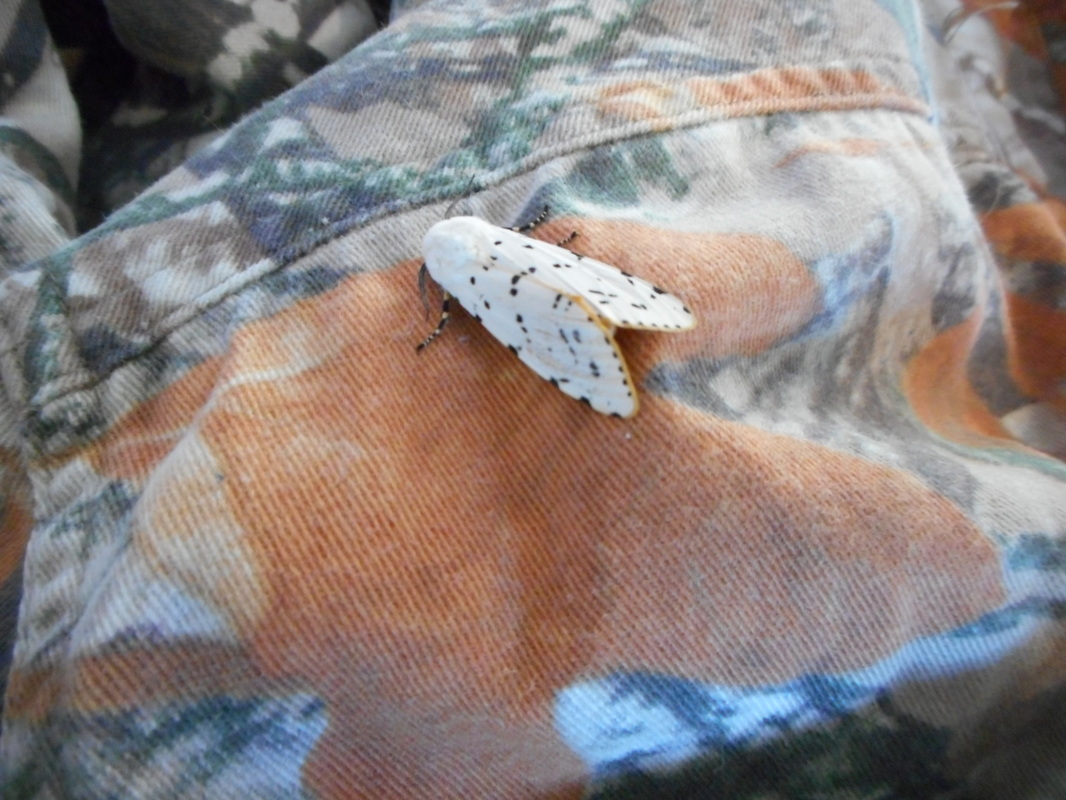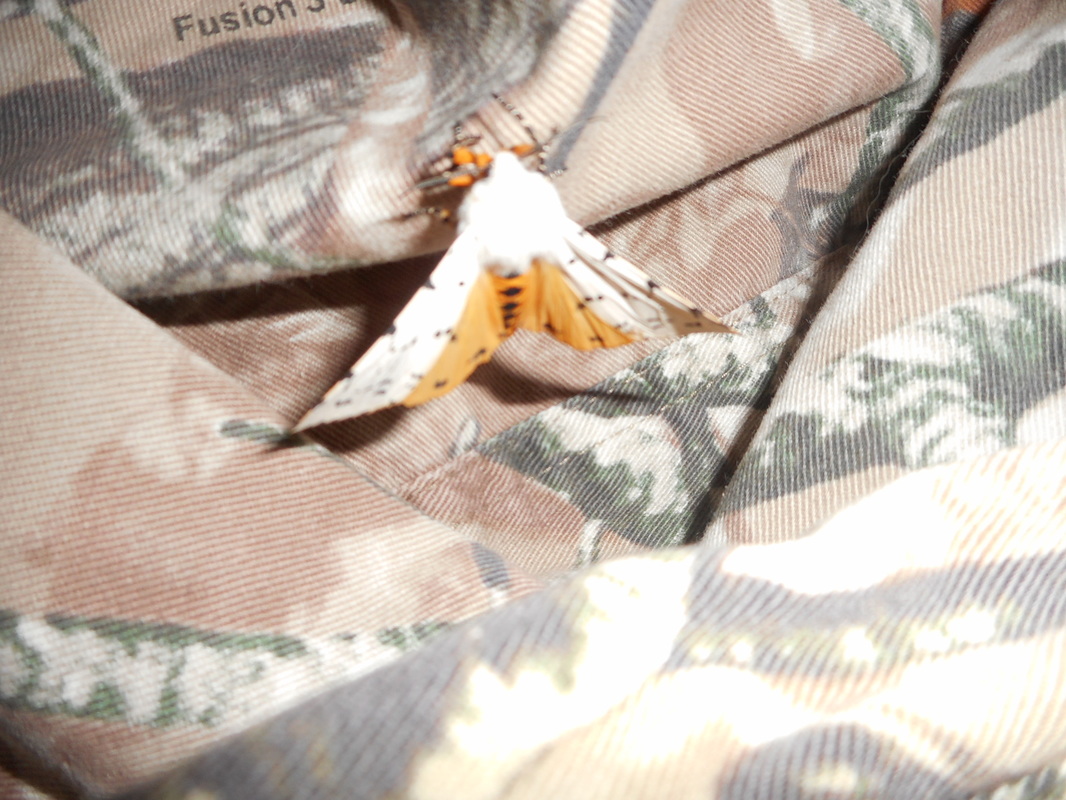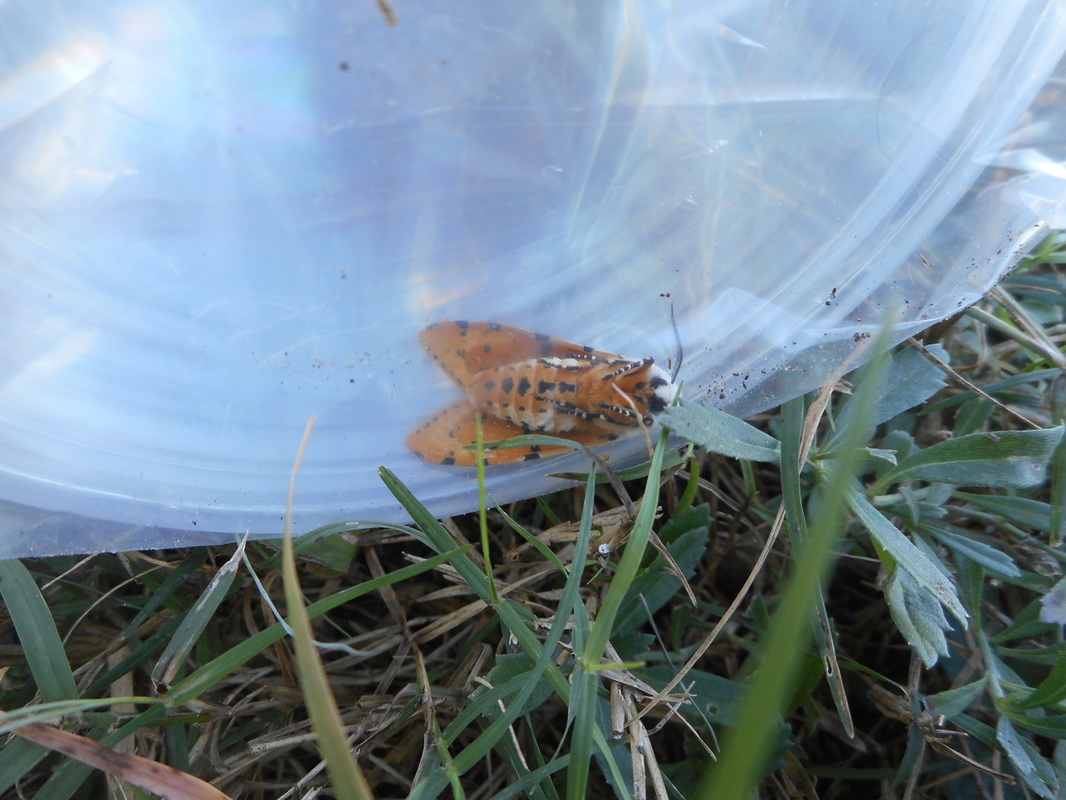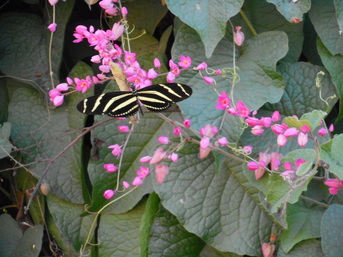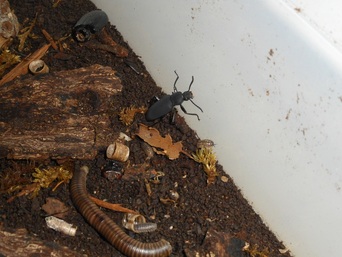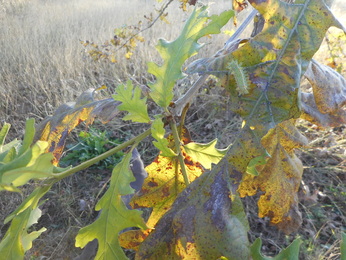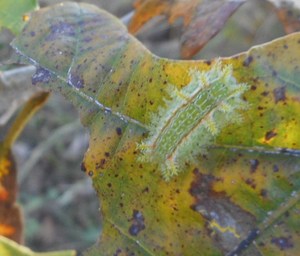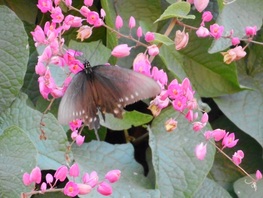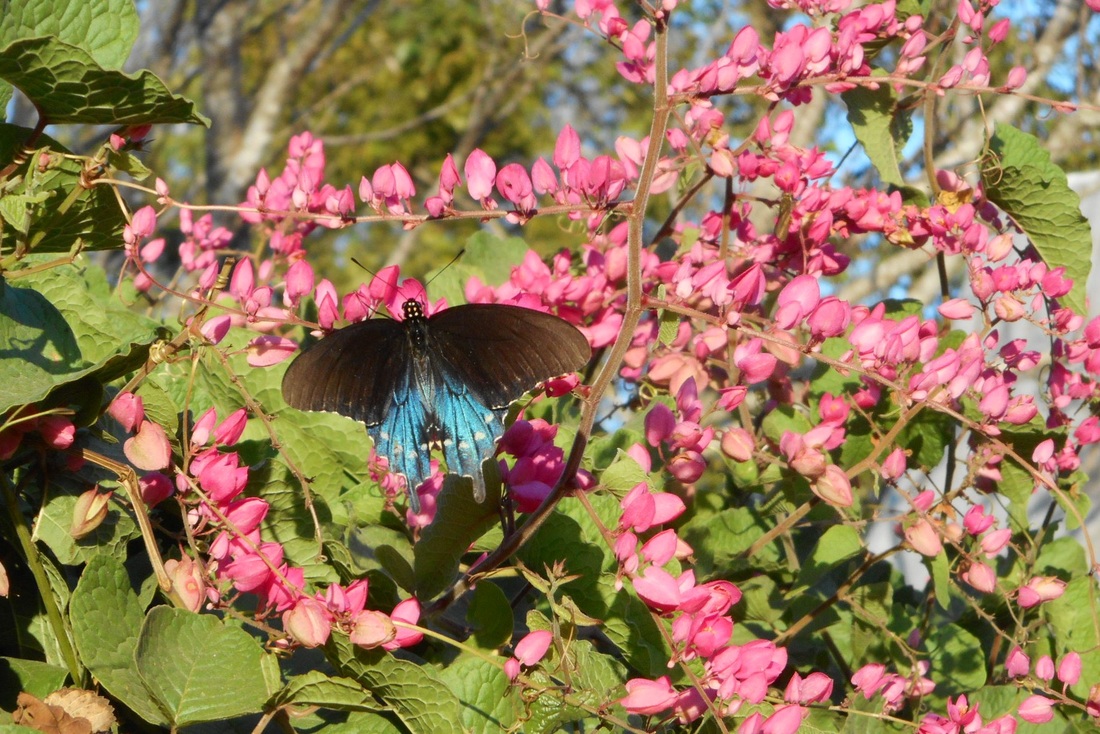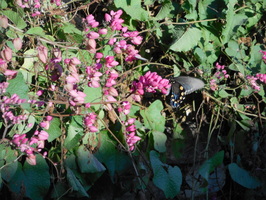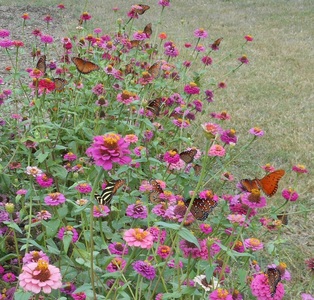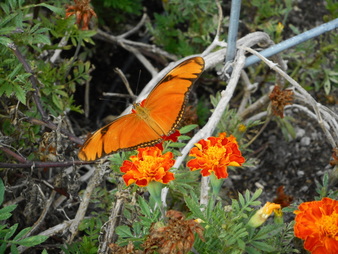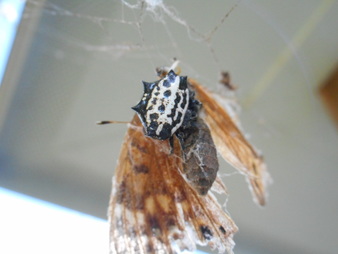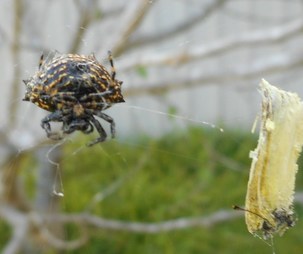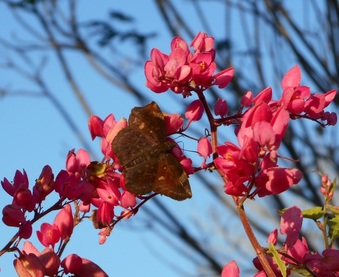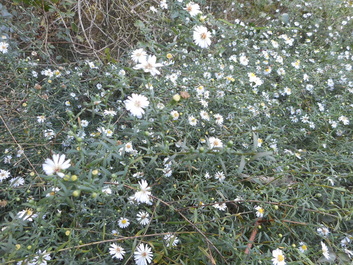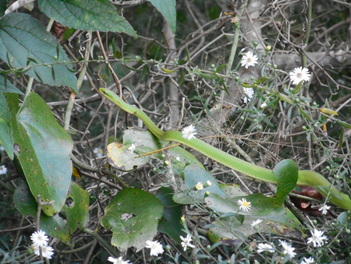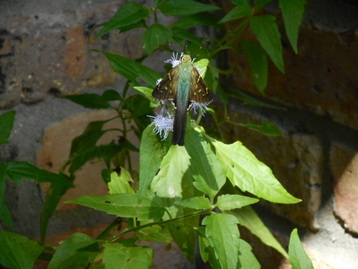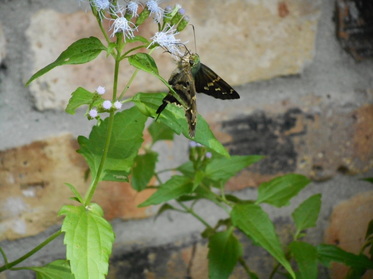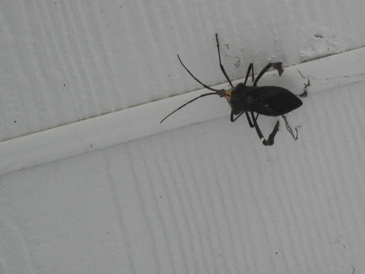To help find the hidden guest, click on the pictures below to enlarge.
Answers can be found at the bottom of this page.
Answers can be found at the bottom of this page.
|
72. Common Checkered Skipper:
a) host plants can be hibiscus and hollyhock b) visits fields and flower gardens c) bluish grey males are territorial d) all of the above e) a and b only |
|
73. Salt Marsh Moth:
a) female has bright orange on hindwings b) is uncommon or rare c) male has bright orange on hindwings d) a and b only e) b and c only |
|
74. Zebra Longwing Butterfly:
a) lives year round in Texas and Florida b) flies slowly c) lives in thick tropical and subtropical woody areas d) feeds on pollen of lantana flowers e) all of the above |
|
77. Spiny Oak Slug Caterpillar:
a) is a moth caterpillar b) food sources are trees, scrubs c) has a painful sting d) all of the above e) a and b only |
|
78. Pipevine Butterfly:
a) is mimicked by several similar butterflies b) flies quickly from flower to flower c) caterpillars eat bad tasting host plants d) adults like honeysuckle, azalea and lilac flowers e) all of the above |
|
82. Spinyback Orb Weaver Spider:
a) feeds on small insects b) lives on porches, in trees and gardens c) faces head down near center of web d) a and b only e) a, b and c |
|
84. Rough Green Snake:
a) lives on the ground b) eats grasshoppers, crickets, spiders and caterpillars c) does not swim d) is brown in color e) all of the above |
|
86. Longtailed Skipper:
a) has a long thin body b) lives in dry areas c) or “Bean Leaf Roller” is the only green longtail d) adults can survive cold winters e) all of the above |
|
Answers:
|
(70) b, (71) a, (72) d, (73) c, (74) e, (75) d, (76) e, (77) d, (78) e, (79) b, (80) d or e, ( 81) e, (82) e, (83) d, (84) b, (85) b, (86) c, (87) d
|
